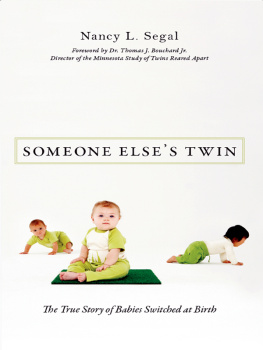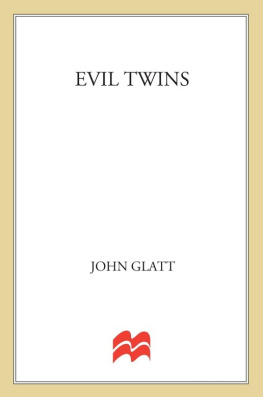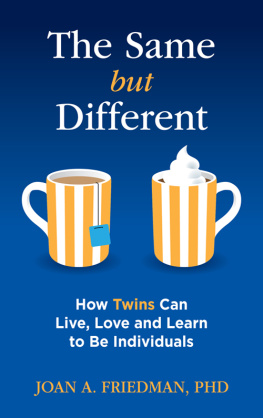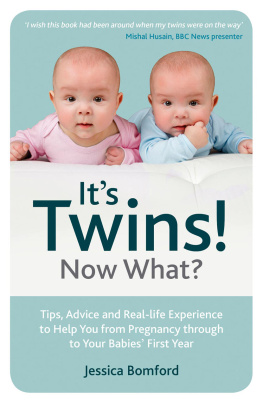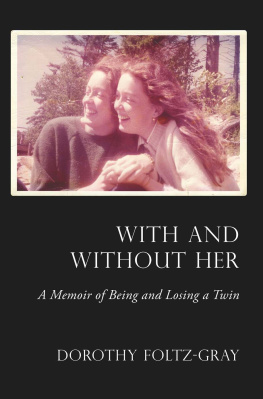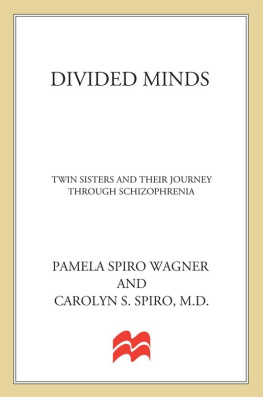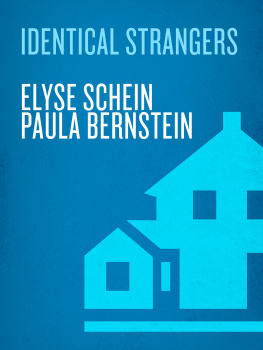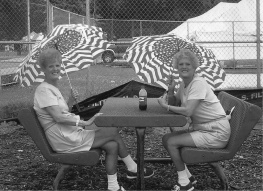
Indivisible by Two: Lives of Extraordinary Twins
Entwined Lives: Twins and What They Tell Us about Human Behavior
Uniting Psychology and Biology:
Integrative Perspectives on Human Development
(edited with Glenn E. Weisfeld and Carol C. Weisfeld)
Born TogetherReared Apart: The Landmark Minnesota Twin Study (forthcoming)
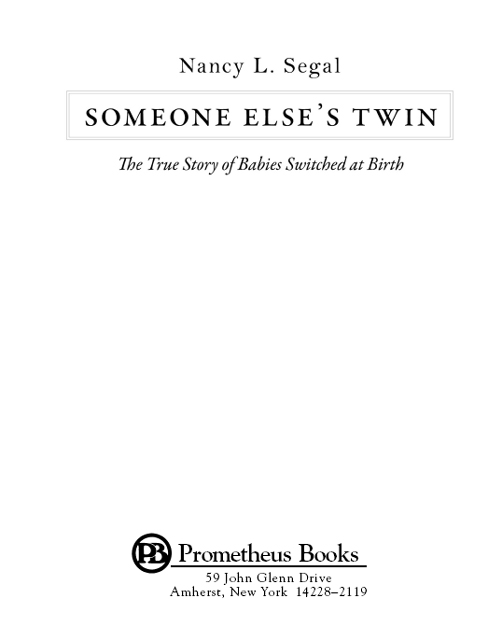
Published 2011 by Prometheus Books
Someone Else's Twin: The True Story of Babies Switched at Birth. Copyright 2011 by Nancy L. Segal. All rights reserved. No part of this publication may be reproduced, stored in a retrieval system, or transmitted in any form or by any means, digital, electronic, mechanical, photocopying, recording, or otherwise, or conveyed via the Internet or a website without prior written permission of the publisher, except in the case of brief quotations embodied in critical articles and reviews.
Cover image Media Bakery
Cover design by Nicole Sommer-Lecht
Inquiries should be addressed to
Prometheus Books
59 John Glenn Drive
Amherst, New York 14228-2119
VOICE: 716-691-0133
FAX: 716-691-0137
WWW.PROMETHEUSBOOKS.COM
15 14 13 12 11 5 4 3 2 1
Library of Congress Cataloging-in-Publication Data
Segal, Nancy L., 1951
Someone else's twin : the true story of babies switched at birth / by Nancy L. Segal.
p. cm.
Includes bibliographical references and index.
ISBN 978-1-61614-437-1 (cloth)
ISBN 978-1-61614-438-8 (ebook)
1. TwinsPsychologyCase studies. 2. TwinsCanary IslandsCase studies. 3. Infants switched at birthCanary IslandsCase studies. 4. Mistaken identity Canary IslandsCase studies. I. Title.
BF723.T9S45 2011
155.44'4dc22
2011014988
Printed in the United States of America on acid-free paper


N o one else on planet Earth knows more about twins than Dr. Nancy Segal. She has personally participated in studies dealing with (a) the biology of twinning, (b) the psychological consequences of twins having been separated early in life, (c) the psychological consequences of twin loss, (d) the experience of being a member of a pair of twins (or triplets), (e) the evolutionary aspects of twinning, (f) the psychological development of twins over time, and (g) the behavioral genetic findings from twin and adoption research. She even invented and implemented a new twinlike research designthe study of virtual twins (unrelated individuals very close in age who are reared in the same family). Dr. Segal has also worked as a consultant on numerous legal cases involving controversies that have arisen because the participants were twins (e.g., wrongful death, injury, custody, accusations of cheating, and controversies regarding twins' placement in the same or different classrooms). Finally, Dr. Segal brings to bear a depth of understanding and empathy that can only come from being a twin herself.
The psychological consequences of switching and consequently separating a pair of twins at birth are profound for all participants. In addition, such an event has legal and ethical implications. No one else comes close to being as qualified as Dr. Segal to elucidate the underlying issues and explain their relevance to a variety of contemporary societal practices. Consider just two of the many issues discussed in this book: parental certainty about a child's paternity and maternity and genetic and environmental influences on psychological development.
In the past, a new mother never worried over whether or not her child was really hers. Only fathers worried, generating an entire literature on cuckoldry, a topic well developed in the works of Shakespeare. Evolutionary psychologists have asserted that this problem led to the development of mechanisms for mate retention, such as denigrating competitors. As Dr. Segal points out, possible baby switching now presents us with a novel problem for mothers, raising a host of interesting psychological issues even Shakespeare did not imagine. Indeed, in spite of the clear elucidation of the problem by Shakespeare, not long ago psychology was so dominated by behaviorist arguments that the rearing environment was everything (the Professional Blank Slate Theory) that psychologists would have asserted that it did not matter who the child's biological parents were. Indeed, some psychologists even argued that a child's gender was simply a social construction.
Children change as they grow and develop, and there are correlations between the parents' behavior and children's behavior (e.g., parents who talk to their children more tend to have children with larger vocabularies than parents who talk to their children less). Therefore, many parents believe that their child-rearing practices are the principal cause of the way in which their children turn out (the Lay Blank Slate Theory). This theory, while clearly in part correct (children require a supportive environment in order for normal development to follow an orderly course), mistakes correlation for causation and ignores the fact that parents also transmit genes that influence behavior.
Today, in part because of Dr. Segal's work in evolutionary psychology, social genetics, and developmental behavior genetics, we know that both Blank Slate theories are seriously flawed and a much broader frame of reference must be brought to bear on virtually every important psychological issue. Evolutionary mechanisms, quantitative genetic mechanisms, and environmental influences all underlie human development and the adult manifestation of psychological traits, as well as emotional response systems and the development of one's identity. Dr. Segal brings this broad frame of reference to the issues discussed in this book.
Because she is both a gifted psychologist and a gifted writer, the story of this unusual experiment is told with verve, insight, and empathy. It is a story that has relevance to each and every one of us, as each and every one of us could have been Someone Else's Twin.
Dr. Thomas J. Bouchard Jr.
Professor Emeritus
University of Minnesota
Department of Psychology
Director, Minnesota Study of Twins Reared Apart (1979-1999)

E very once in a while a researcher discovers a problem, event, or situation that is irresistible, something so compelling that she drops everything to study it. This happened to me in June 2008 when I learned about Delia and Begoa, a pair of switched-at-birth identical twins from Spain's Canary Islands (Islas Canarias), located off the Moroccan coast. In 1973, newborn twin Delia, born on January 18, was accidentally switched with unrelated infant Beatriz, born on January 15, in the crowded nursery of the Nuestra Seora del Pino Hospital. It is likely that the three infants were placed in the same incubator, making an exchange of babies likely by either of the two nurses in charge of sixty newborns. In that instant, Begoa and Beatriz became a fraternal twin pair, and Delia became a first-born singleton child raised by a family with whom she had no biological connection. No one discovered the mistake until 2001 when the twins and Beatriz turned twenty-eight, at which time two chance encounters, two incidents of mistaken identity, and more than a little curiosity finally revealed the truth.

